Related Research Articles
Jazz is a music genre that originated in the African-American communities of New Orleans, Louisiana, in the late 19th and early 20th centuries, with its roots in blues, ragtime, European harmony and African rhythmic rituals. Since the 1920s Jazz Age, it has been recognized as a major form of musical expression in traditional and popular music. Jazz is characterized by swing and blue notes, complex chords, call and response vocals, polyrhythms and improvisation.
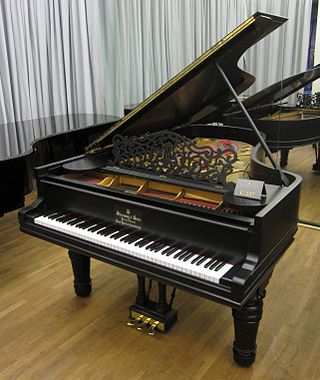
The piano is a keyboard instrument that produces sound when its keys are depressed, through engagement of an action whose hammers strike strings. Most pianos have a row of 88 black and white keys, representing each note of the chromatic scale as they repeat throughout the keyboard's span of seven and a quarter octaves. There are 52 white keys, known as “naturals”, and 36 black keys, known as “sharps”. The naturals repeat a pattern of whole steps and half steps unique to any given starting note. These patterns define a diatonic scale. The 36 sharps repeat a pattern of whole steps and minor thirds, which defines a pentatonic scale.
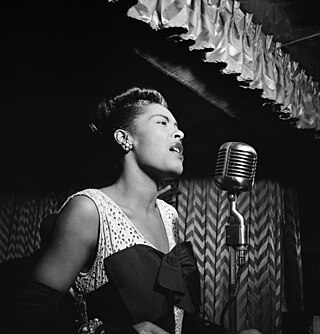
A song is a musical composition performed by the human voice. The voice often carries the melody using patterns of sound and silence. Songs have a structure to them, such as the common ABA form, and are usually made of sections that are repeated or performed with variation later. A song without instruments is said to be a cappella.
Free jazz or Free Form in the early- to mid-1970s is a style of avant-garde jazz or an experimental approach to jazz improvisation that developed in the late 1950s and early 1960s when musicians attempted to change or break down jazz conventions, such as regular tempos, tones, and chord changes. Musicians during this period believed that the bebop and modal jazz that had been played before them was too limiting, and became preoccupied with creating something new. The term "free jazz" was drawn from the 1960 Ornette Coleman recording Free Jazz: A Collective Improvisation. Europeans tend to favor the term "free improvisation". Others have used "modern jazz", "creative music", and "art music".
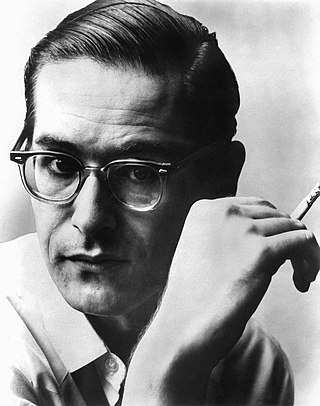
William John Evans was an American jazz pianist and composer who worked primarily as the leader of his trio. His interpretations of traditional jazz repertoire, his ways of using impressionist harmony and block chords, and his trademark rhythmically independent, "singing" melodic lines, continue to influence jazz pianists today.
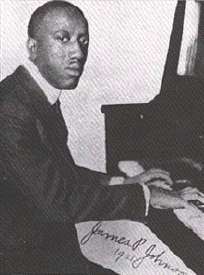
James Price Johnson was an American pianist and composer. A pioneer of stride piano, he was one of the most important pianists in the early era of recording, and like Jelly Roll Morton, one of the key figures in the evolution of ragtime into what was eventually called jazz. Johnson was a major influence on Count Basie, Duke Ellington, Art Tatum, Thelonious Monk, and Fats Waller, who was his student.

Accompaniment is the musical part which provides the rhythmic and/or harmonic support for the melody or main themes of a song or instrumental piece. There are many different styles and types of accompaniment in different genres and styles of music. In homophonic music, the main accompaniment approach used in popular music, a clear vocal melody is supported by subordinate chords. In popular music and traditional music, the accompaniment parts typically provide the "beat" for the music and outline the chord progression of the song or instrumental piece.

John Arthur "Jaki" Byard was an American jazz multi-instrumentalist, composer, and arranger. Mainly a pianist, he also played tenor and alto saxophones, among several other instruments. He was known for his eclectic style, incorporating everything from ragtime and stride to free jazz.
In music, quartal harmony is the building of harmonic structures built from the intervals of the perfect fourth, the augmented fourth and the diminished fourth. For instance, a three-note quartal chord on C can be built by stacking perfect fourths, C–F–B♭.
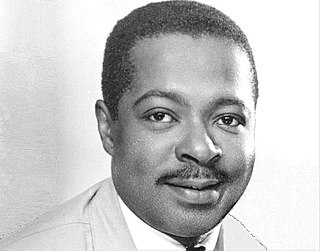
Wynton Charles Kelly was an American jazz pianist and composer. He is known for his lively, blues-based playing and as one of the finest accompanists in jazz. He began playing professionally at the age of 12 and was pianist on a No. 1 R&B hit at the age of 16. His recording debut as a leader occurred three years later, around the time he started to become better known as an accompanist to singer Dinah Washington, and as a member of trumpeter Dizzy Gillespie's band. This progress was interrupted by two years in the United States Army, after which Kelly worked again with Washington and Gillespie, and played with other leaders. Over the next few years, these included instrumentalists Cannonball Adderley, John Coltrane, Hank Mobley, Wes Montgomery, and Sonny Rollins, and vocalists Betty Carter, Billie Holiday, and Abbey Lincoln.
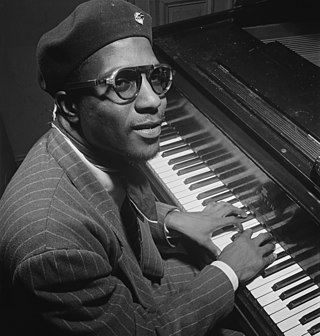
Jazz piano is a collective term for the techniques pianists use when playing jazz. The piano has been an integral part of the jazz idiom since its inception, in both solo and ensemble settings. Its role is multifaceted due largely to the instrument's combined melodic and harmonic capabilities. For this reason it is an important tool of jazz musicians and composers for teaching and learning jazz theory and set arrangement, regardless of their main instrument. By extension the phrase 'jazz piano' can refer to similar techniques on any keyboard instrument.
Jazz chords are chords, chord voicings and chord symbols that jazz musicians commonly use in composition, improvisation, and harmony. In jazz chords and theory, most triads that appear in lead sheets or fake books can have sevenths added to them, using the performer's discretion and ear. For example, if a tune is in the key of C, if there is a G chord, the chord-playing performer usually voices this chord as G7. While the notes of a G7 chord are G–B–D–F, jazz often omits the fifth of the chord—and even the root if playing in a group. However, not all jazz pianists leave out the root when they play voicings: Bud Powell, one of the best-known of the bebop pianists, and Horace Silver, whose quintet included many of jazz's biggest names from the 1950s to the 1970s, included the root note in their voicings.
In jazz harmony, a So What chord is a particular 5-note chord voicing. From the bottom note upwards, it consists of three perfect fourth intervals followed by a major third interval. It was employed by Bill Evans in the "'amen' response figure" to the head of the Miles Davis tune "So What".
Mark Jay Levine was an American jazz pianist, trombonist, composer, author and educator.
In music, harmonization is the chordal accompaniment to a line or melody: "Using chords and melodies together, making harmony by stacking scale tones as triads".

Boris Papandopulo was a Croatian composer and conductor of Greek and Russian Jewish descent. He was the son of Greek nobleman Konstantin Papandopulo and Croatian opera singer Maja Strozzi-Pečić and one of the most distinctive Croatian musicians of the 20th century. Papandopulo also worked as music writer, journalist, reviewer, pianist and piano accompanist; however, he achieved the peaks of his career in music as a composer. His composing oeuvre is imposing : with great success he created instrumental, vocal and instrumental, stage music and film music. In all these kinds and genres he left a string of anthology-piece compositions of great artistic value.
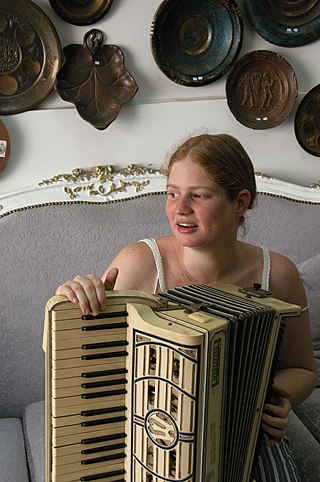
Maya Dunietz, is an Israeli musician and artist, combining a solo career with collaborations with renowned musicians: Emahoy Tsegué-Maryam Guèbrou, Roscoe Mitchell, John Tilbury, Habiluim, and many others. Her works are exhibited in venues such as Centre Pompidou Paris, Athens Onassis Center, Frac Paca, CCA Tel Aviv and Bemis Center for Contemporary Art.
The Panama Jazz Festival was founded in September 2003 by pianist and Grammy winner Danilo Pérez.
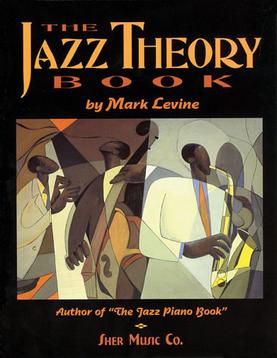
The Jazz Theory Book is an influential work by Mark Levine, first published in 1995. The book is a staple in jazz theory, and contains a wide range of jazz concepts from melodic minor scales and whole tone scale to bebop scales, diminished scales and "Coltrane" reharmonization. Levine assumes that the reader can read music, and gives over 750 musical examples.
"A Child Is Born" is a jazz instrumental that was later recorded with lyrics added. It was written in 1969 by the jazz trumpeter Thad Jones with lyrics added independently by Alec Wilder after hearing the Thad Jones-Mel Lewis Orchestra perform the instrumental. The instrumental and the song have been recorded by a number of musicians including Tony Bennett, Stanley Turrentine and Bill Evans, Richard Davis, Kenny Burrell, Dee Dee Bridgewater, Hank Jones and Helen Merrill.
References
- ↑ Kernfeld, Barry (2003). "Levine, Mark (Jay)". Grove Music Online. Oxford University Press. doi:10.1093/gmo/9781561592630.article.J266700.